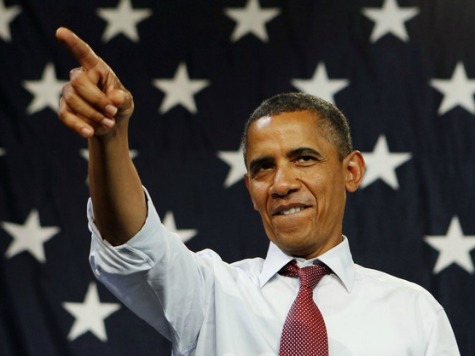
President Barack Obama won reelection because he energized liberals and expanded the electorate by finding and turning out his base, especially black voters.
Nowhere was this more evident than in Ohio, where black turnout increased by four percentage points from 2008’s historic turnout number. In turn, they gave Democrats a whopping seven-point partisan advantage at the polls on election day and provided Obama with his margin of victory in the crucial swing state.
In 2012, blacks made up 15% of Ohio’s electorate, and Obama received 96% of their vote to Mitt Romney’s 4%.
In 2008, black turnout made up 11% of Ohio’s electorate, and Obama won blacks by 95 points (97%-2%) over John McCain.
In 2004, black voters accounted for 10% of the vote Ohio. John Kerry received 84% of the black vote, while George W. Bush received 16%, five points above Bush’s national average among blacks.
These numbers show that Romney’s team — even as comparisons between 2012 and 2004 were incessantly made throughout the election cycle — never learned the most valuable and simplest lesson from Bush’s 2004 operation: in a so-called “base” election, the candidate who galvanizes and energizes his base the most wins.
African Americans are one of Democrats’ most loyal voting blocs, and Obama’s historic candidacy — and reelection — surely energized them.
Unlike the Republican establishment and Mitt Romney’s campaign, Democrats did not alienate, demean, or make their base feel disrespected. Democrats cultivated their votes, which made it easier for the party to organize. Their base — like African Americans did in Ohio — often took it upon themselves to bring other Democrats to the polls.
Republicans, on the other hand, had to make up for a lack of enthusiasm for Romney’s candidacy with technological gimmicks like the “Orca” application, which spectacularly failed on Election Day.
Blacks make up 12 percent of Ohio’s population, a Resurgent Republic analysis noted, but represented a greater share of the electorate (15%). If blacks had only turned out in similar numbers as they did in 2008, when enthusiasm for Obama was already at astronomical levels, Romney would have won Ohio. He would have won Ohio comfortably if the numbers were in line with 2004’s.
The analysis also showed that while Romney won the white vote in Ohio by 17 points (58% – 41%) and independents by 10 points (a net 18-point swing from Obama since 2008), the overwhelming turnout by blacks resulted in Democrats having a whopping 7-point advantage at the polls. In contrast, in 2004, Republicans had a five-point advantage in Ohio on Election Day.
As The New Republic observed:
In 2004, Kerry won the four counties corresponding to Ohio’s largest black population centers–Cleveland, Toledo, Columbus, and Cincinnati–by 16 points while losing the rest of the state by 11. In 2012, Obama won the four large, urban counties by 25 points while losing the rest of the state by 9.1 points.
In 2004, Bush energized the conservative base, especially evangelical voters. In Ohio, where there was a ballot initiative against gay marriage, even more of them were energized. Bush’s socially conservative message on the stump also resonated with black voters in Ohio in 2004, many of whom were against gay marriage.
Bush in 2004 showed that it is easier in a base election to expand the electorate by turning out more of the party’s natural voters — conservatives. His campaign also proved that Republicans could win over minorities in crucial swing states like Ohio, without moderating or pandering, with conservative messages and policies.
These are lessons and principles Republicans should apply and reaffirm in the years ahead.

COMMENTS
Please let us know if you're having issues with commenting.